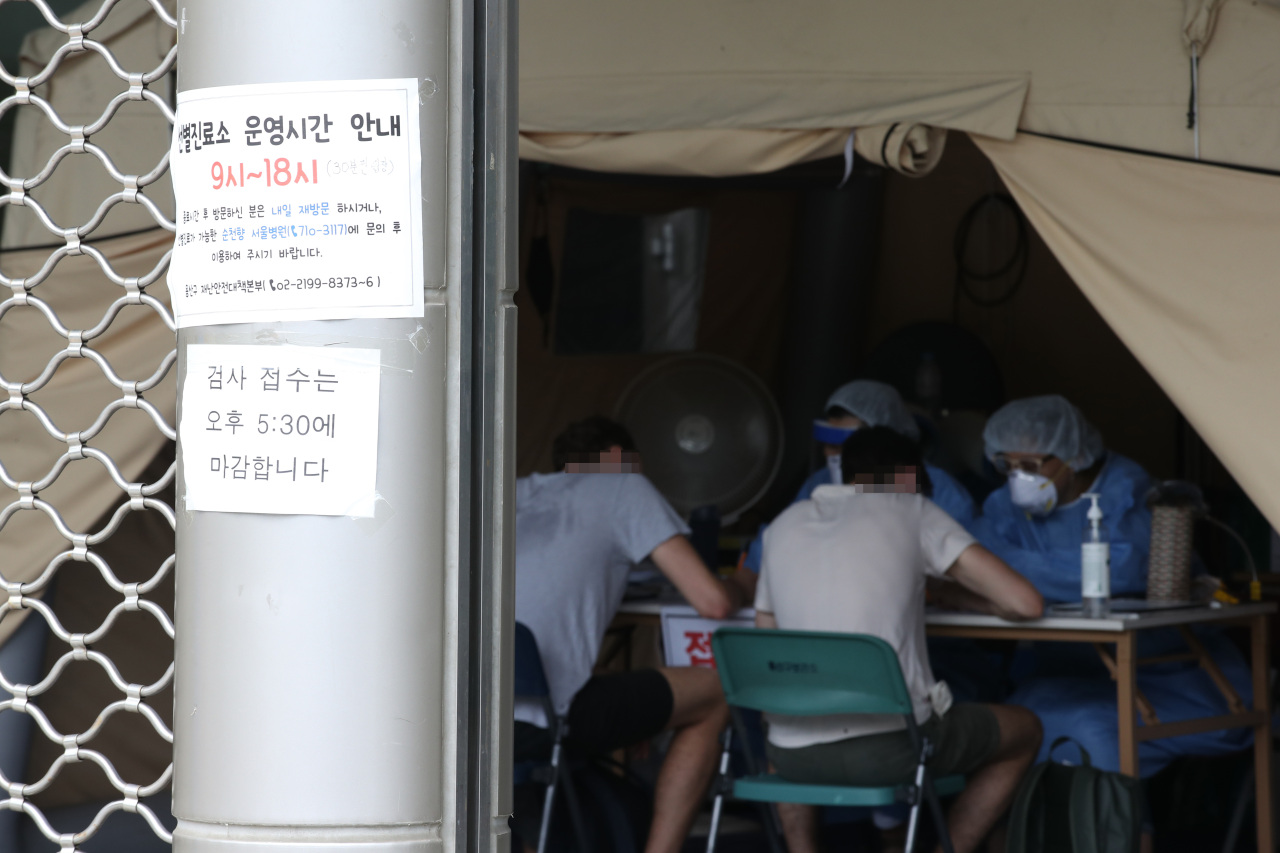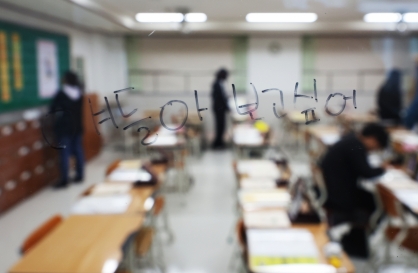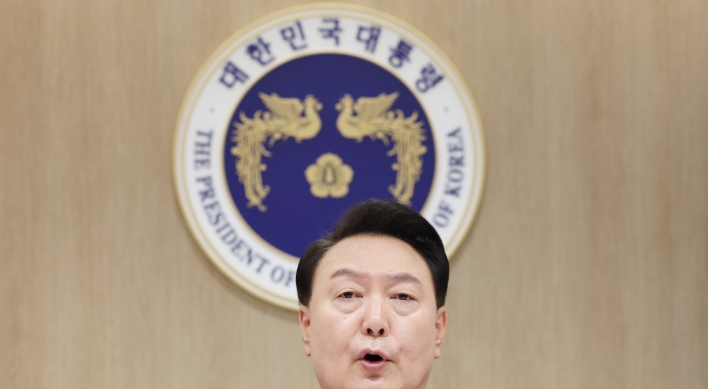New virus cases fall back to 20 as local cases return to single digit
By YonhapPublished : Aug. 7, 2020 - 10:17

South Korea's new virus cases fell sharply on Friday as local infections grew again in a single-digit figure. But new cluster infections at restaurants and churches are still straining the country's anti-virus fight.
The country added 20 cases, including nine local infections, raising the total caseload to 14,519, according to the Korea Centers for Disease Control and Prevention (KCDC).
On Thursday, the new virus cases rose above 40 for the first time since July 29, when the figure reached 48, with domestic cases outnumbering imported ones for the first time in 13 days.
South Korea added just 23 total cases on Monday as local infections reached a three-month low. But sporadic cluster infections have led to yet another uptick in the number of local cases.
Of the locally transmitted cases added Friday, six were from the capital city of Seoul.
A total of 16 cases have been traced to a coffee shop and a restaurant in southern Seoul as of Friday, up one from a day earlier.
Starting Thursday, South Korea made it mandatory for coffee shops and other cafes to have their employees wear masks all times, with visitors also being required to wear them while waiting in queues or ordering drinks.
Gyeonggi Province that surrounds Seoul added three new cases.
A church located in Goyang, north of Seoul, reported seven new cases as of Friday noon, raising the total related cases to 15. Health authorities said the church was located underground, and its members had dined together.
Another church in the city also added seven new cases, raising the total to eight as of Friday.
"It is very worrisome that local churches are reporting new cluster infections in the greater Seoul area," KCDC Director Jeong Eun-kyeong said during a daily briefing. "If such cases continue, we need to consider enforcing anti-virus measures for the facilities."
South Korea had been banning church members from having gatherings other than regular worship services amid the soaring number of related patients, but it decided to lift the regulation on July 24.
"We need to remember that all forms of gatherings are vulnerable to virus infections during the COVID-19 pandemic," Jeong added.
Health authorities said 336 people who attended an Islamic festival in Cheongju, 137 kilometers south of Seoul where six virus patients were confirmed Wednesday, tested negative for COVID-19. More investigation is underway.
Cases coming in from overseas have risen by double-digit numbers for 43 consecutive days. Among the 11 additional cases, five were detected at quarantine checkpoints at ports and airports.
Of the newly added imported cases, the United States accounted for four, followed by Iraq with three. There were new cases from Russia, Hong Kong, Ethiopia, and Kazakhstan as well.
The daily imported cases reached a record on Feb. 25 by reaching 86.
The country suffered a sharp increase in the number of such cases due to South Korean workers returning home from Iraq, along with sailors from Russian ships docked at its port.
Since June, 94 seafarers from nine Russia-flagged ships docked in Busan have tested positive for COVID-19.
Another sailor from a Russian ship docked in Incheon, west of Seoul, also tested positive for the virus Friday. The ship reported its first case on July 26.
Health authorities said among 216 workers from Iraq who tested negative upon their arrival on July 24, 214 were released from their mandatory quarantine on Friday. Two tested positive for the virus.
The number of South Korean construction workers overseas is currently estimated at around 9,350, with 121 of them testing positive for the virus.
South Korea added it has decided to lift restrictions on arrivals from China's Hubei Province, where the pandemic is believed to have originated, starting Monday.
Over the past two weeks, nearly 70 percent of the newly added cases were imported, while 6 percent of infection routes remain unknown.
The country reported one more, keeping the number of fatalities at 303, according to the KCDC. The fatality rate reached 2.09 percent.
The number of patients fully cured of the virus reached 13,543, up 42 from the previous day. This indicates 93.28 percent of patients reported here were recovered.
South Korea, which has a population of around 51 million, carried out 1,613,652 COVID-19 tests since Jan. 3. (Yonhap)




















